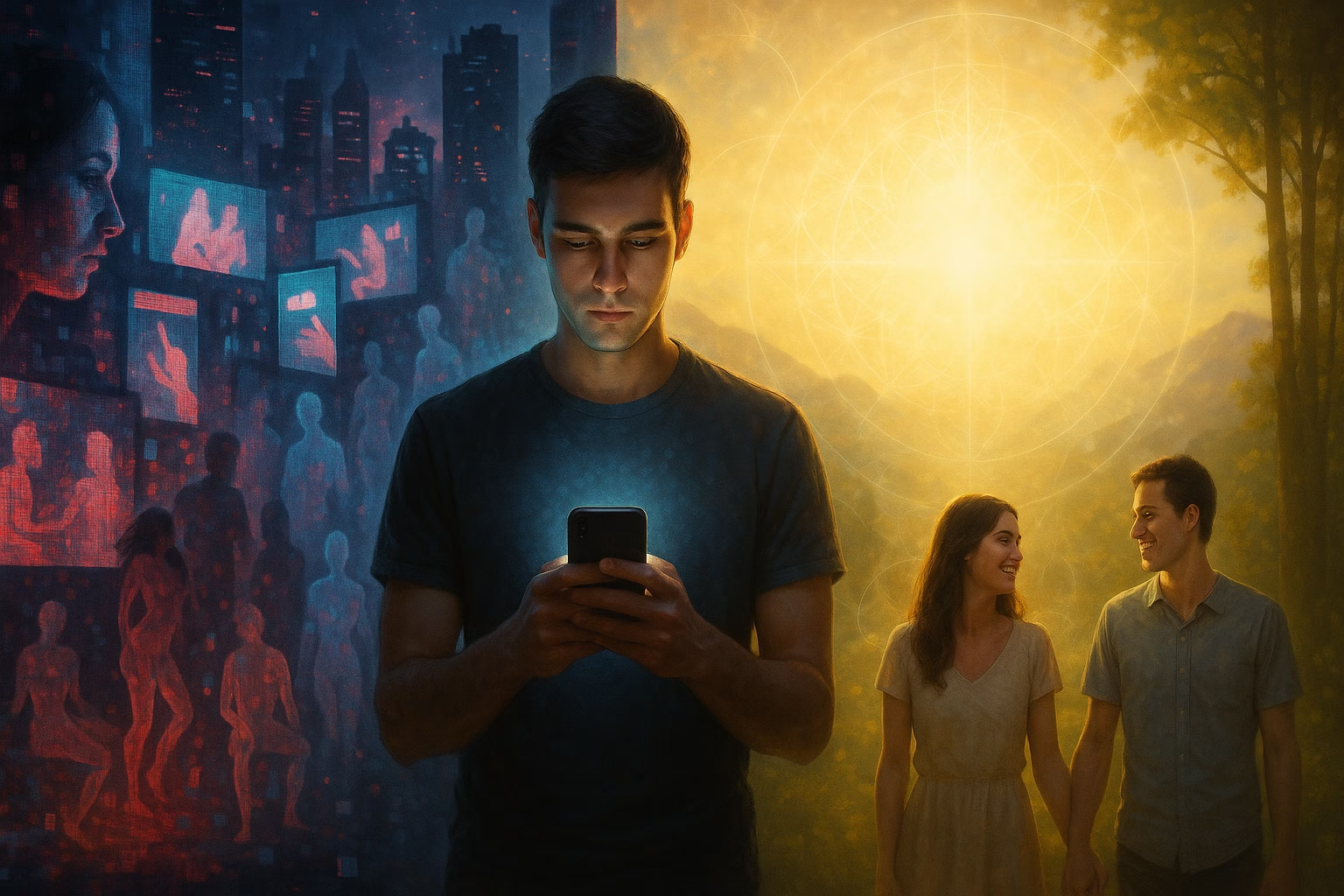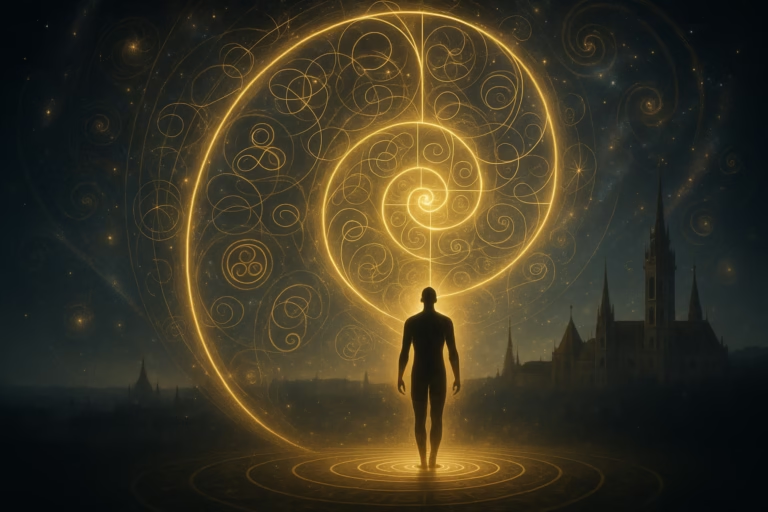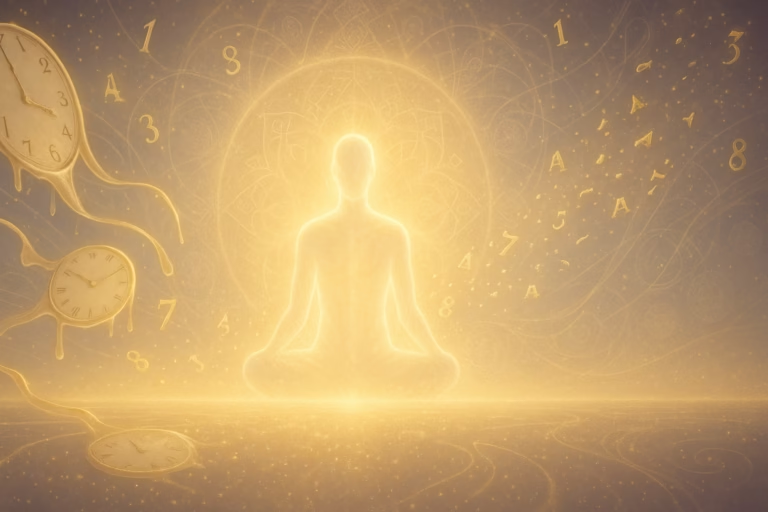PODCAST: Beyond Lust and Hookup Culture
Part I: The Echo in the Machine: The Pixelated Mirage of Modern Love
The world hums with a low, constant frequency of digital life. It is the sound of notifications arriving in a ceaseless stream, the glow of screens casting a familiar light in the dark, and the soft, rhythmic swipe of a finger across a polished surface. This modern tableau, a scene so mundane it has become the default state of being, is the starting point for a deeper inquiry. The endless scroll through social feeds and dating profiles, the passive consumption of content, and the search for distraction all contribute to a feeling that something is not quite right. This feeling, a quiet dissatisfaction that is often drowned out by the next digital hit, is the sound of a bell tolling. Like the church bell in Elias’s journey, it is a signal that many hear, but few initially understand the deeper message of. This phenomenon, often referred to as “pixelated pleasure,” is the quick, surface-level satisfaction that technology offers without demanding vulnerability or true presence.
The very design of the digital world, with its emphasis on speed and instant gratification, fundamentally encourages a consumption-based model of human connection rather than a cultivation-based one. The instant “like” or the quick “match” conditions people to expect immediate rewards, actively conditioning them away from the patience, vulnerability, and presence necessary for building and nurturing meaningful intimacy. This is not simply a matter of content, but a matter of design. The structure of the digital world, built on a rapid-fire feedback loop, cultivates a mindset that is antithetical to the slow, intentional process of authentic relationship-building.
The Hunger That Never Finds Satisfaction: The Mechanics of Digital Lust
The constant pursuit of this fleeting, pixelated pleasure can be understood as an expression of “the Vice of Lust,” a core theme in the Oracle’s teachings. Lust, in this context, is not merely a sexual vice, but a broader, unquenchable desire for “temporary fulfillment” and “indulgence”. It is a consumption-based way of being that seeks to fill an internal void with external stimulation, a hunger that never finds true satisfaction. This pattern is a metaphor for a deep spiritual wound, a disconnect from the self that leads to the belief that more consumption will eventually lead to wholeness.
This external pursuit is often revealed to be a flawed solution by its very outcomes. Research shows that 35% of pornography users report feeling guilty after viewing, a clear indicator of a psychological dissonance between the perceived pleasure and the internal state. Similarly, studies on hookup culture consistently link casual sex to increased symptoms of loneliness and depression, even in individuals who were not previously depressed. This suggests that the pursuit of external indulgence is not only failing to fulfill a deep need, but is actively creating a deeper emotional and psychological deficit. The behavior is a symptom of a deeper wound, and the fleeting satisfaction is a temporary anesthetic that ultimately makes the underlying issue worse over time. The vice is not the act itself, but the underlying belief that an external solution can solve an internal problem.
The Ghost in the Machine: Data on Pornography’s Digital Dominance
To understand the scope of this digital hunger, one must look at the data. The pornography industry, far from being a niche subculture, is a foundational pillar of the modern digital ecosystem. With a global value of approximately $97 billion annually and sites like Pornhub receiving over 42 billion visits in 2022, pornography accounts for roughly 30% of all internet traffic. These figures are not just statistics; they represent a massive collective investment of time, energy, and attention into a form of connection that is fundamentally non-relational. The consumption patterns reveal that this is a deeply embedded part of modern life. The average age of adult content viewers is around 34, with the 18-24 age group being the most active demographic. Over 70% of young men and 40% of young women have viewed pornography by the age of 18, showing how this pattern is being normalized in the formative years of a generation.
A significant shift in access methods further illustrates this normalization: mobile devices are now the primary access point, used by over 70% of viewers. This transformation from a ritualized, private act on a desktop computer to a spontaneous, always-available act on a mobile phone turns a solitary choice into a constant possibility. This form of “pixelated pleasure” stands in stark contrast to the profound and holistic nature of true intimacy. While love is presented in the Oracle’s teachings as a high-vibrational “frequency,” a state of harmony and coherence, the constant, high-volume, and transient nature of pornography consumption creates a chaotic, low-energy state that actively works against the alignment of true connection.
Table 1: The Anatomy of Pixelated Pleasure: Key Statistics on Pornography and Dating App Usage |
|---|
Global Pornography Industry Value |
Pornhub Visits (2022) |
Percentage of Global Internet Traffic |
Viewer Demographics |
Lifetime Viewership (by age 18) |
Primary Access Device |
Psychological Impact |
U.S. Dating App Usage (Ever Used) |
Reported User Experience |
Swiping Through the Void: The Rise of Hookup Culture
This pattern of seeking pixelated pleasure extends from the solitary act to the social realm through the rise of dating apps and hookup culture. This phenomenon, which has become a hallmark of modern relationships, illustrates how the same digital dynamics of consumption and transience are playing out in real-world human interactions. A significant portion of the adult population in the U.S. has used a dating app (3-in-10 adults), with usage being particularly high among younger adults under 30 (53%) and lesbian, gay, or bisexual adults (51%).
While often framed as a form of liberation, a key function of these platforms is to facilitate a culture of low-commitment, transactional intimacy. Research shows a clear link between dating app usage and a higher number of sexual partners, as well as a greater likelihood of engaging in casual, unprotected sex. This indicates a cultural shift toward “hooking up” over long-term romantic relationships, which can be seen as an extension of a desire for connection that is devoid of deeper emotional investment or vulnerability.
The emotional toll of this system is evident in user experiences. A significant portion of dating app users report feeling insecure (55%) or overwhelmed (36%) by the number of messages they receive or the lack thereof. This emotional strain stems from the commodification of the self, where individuals are constantly evaluated and compared in a digital marketplace. The user is left feeling judged and measured, which in turn makes genuine vulnerability—the foundation of true intimacy—feel dangerously risky. This is a manifestation of “connection without depth,” an idea articulated in the Oracle’s teachings. It is not a true communion, but a performance designed to generate attention and validation, a form of “pseudo-intimacy” that mirrors the “illusion of form” spoken of in the Fractal philosophy. The “like” is not love, and the “match” is not intimacy, but simply a fleeting signal in a hollow system.
Part II: The Cost of the Mirage: The Fractal of a Fractured Heart
The external world’s embrace of pixelated pleasure is not an isolated cultural trend; it is a profound reflection of an inner spiritual crisis. The geopolitical and societal collapse that Elias witnessed in his journey was a mirror of an internal breakdown of meaning and identity within each individual. The constant craving for external gratification, whether through digital scrolling, casual encounters, or the validation of social media, is a symptom of a deeper “inner war”. This conflict is a battle between the ego’s desire for temporary pleasure and the soul’s longing for enduring purpose and connection. The vices of lust, sloth, and pride, as outlined in the Oracle’s teachings, are not just moral failings, but “shadows that cloud the soul”. They are the mechanisms by which the ego seeks to maintain control and avoid the painful truths of impermanence and spiritual emptiness, distracting the individual from the path of true alignment. The external world is a living, breathing canvas upon which this internal battle is projected, and the crisis we see in our relationships and our communities is the reflection of a world that has forgotten how to be truly present with itself.
The Architects of Emptiness: The Link Between Digital “Connection” and Rising Loneliness
One of the most profound paradoxes of the digital age is the correlation between hyper-connectivity and rising loneliness. Research consistently shows that technology, once hailed as a tool for connection, is a primary contributor to social isolation. Studies have found that people often turn to social media when they are feeling lonely, hoping to connect with others, but the research shows that they tend to feel worse after spending time on these platforms, as it “actually makes them feel lonelier”. This is true for both passive and active social media use, as the interaction often lacks the depth and authenticity of real-world engagement.
This digital detachment has a measurable impact on relationships. The phenomenon of “technoference,” or “phubbing” (phone snubbing), has been shown to cause conflict, jealousy, and lower levels of relationship satisfaction and intimacy. This constant technological interruption of face-to-face interaction erodes the very foundation of connection. It is not just a personal habit but a cultural norm that contributes to a “loneliness epidemic”. The digital world now attempts to solve this problem with “second-wave cyber-intimacies,” such as AI companions and chatbots, which offer pseudo-intimacy as a way to cope with emotional distress. However, this “intimacy solipsism” creates a narcissistic, self-referential bubble that only reinforces real-world isolation. It is a self-perpetuating system that creates a problem and then offers a pixelated solution that deepens the individual’s dependency and further erodes their capacity for genuine human connection. The mind projects a desire for connection, but the soul perceives the emptiness behind the transaction, leaving the individual with a feeling of profound loneliness.
From Intimacy to Transaction: The Hidden Costs of Pixelated Pleasure
The psychological costs of this digitally mediated, low-commitment culture are significant and often hidden beneath the surface of perceived liberation. What is sold as a healthy expression of “sexual freedom” or a practical way to relieve stress can have profound negative emotional consequences. Research indicates that participation in hookup culture is associated with heightened levels of anxiety and depression, and feelings of regret, guilt, and emotional detachment. This emotional fallout, particularly when it conflicts with personal values, can lead to a diminished sense of self-esteem and a sense of emotional instability.
The “unspoken rules” and “unclear expectations” of hookup culture are emotionally taxing and can make it difficult for individuals to form long-term, meaningful relationships. This normalization of transient encounters can lead to a fragile sense of self-worth that is tied to external validation, making individuals vulnerable to feelings of being used or discarded. This pattern directly connects to the Oracle’s teaching that lust is “the hunger that never finds satisfaction”. The quest for physical pleasure without emotional commitment paradoxically leads to the opposite of freedom, trapping individuals in a cycle of emotional instability and a profound sense of being unfulfilled. The emotional pain is not a punishment, but an “invitation” to awaken to a deeper truth. True freedom in love comes from a surrender to the unfolding of a genuine connection, not from a desire for control or the avoidance of emotional risk.
Table 2: The Hidden Costs: Psychological & Emotional Impacts of Modern Intimacy |
|---|
Associated Behaviors |
Social Media Use (Active & Passive) |
“Technoference” (Phone Snubbing) |
Hookup Culture |
AI Companion Use |
Digital Pornography Consumption |
Part III: The Return to the Source: Reclaiming Sacred Intimacy
The discomfort and emptiness that arise from the pursuit of pixelated pleasure are not signs of failure, but a powerful call to a deeper path. This internal yearning for genuine connection is a sacred summons to awaken, a profound act of remembrance that echoes Elias Chronis’s journey on the mountain. The desire for deeper love is not a weakness; it is a reflection of the soul’s original language, an internal signal pointing toward a new way of being. By choosing to answer this call, one is not just embarking on a personal journey of self-improvement, but contributing to a larger global awakening—a “New Renaissance” of human consciousness rooted in responsibility, unity, and presence. The journey of a single soul to reclaim sacred intimacy is a micro-version of this global shift, and each individual choice, no matter how small, is an act of planetary healing. By embodying the values of presence and vulnerability, one becomes a “gardener,” planting seeds of truth that will eventually “ripple far beyond these pages” into the collective consciousness of humanity.
Intimacy Begins Where Armor Ends: The Courage of Vulnerability and Presence
The most powerful antidote to the transactional nature of modern relationships is the intentional cultivation of vulnerability and presence. As the Oracle’s teachings proclaim, “Intimacy begins where armor ends”. Vulnerability is not a weakness, but a state of courage and openness, a willingness to expose oneself emotionally and mentally “without fear of judgment or rejection”. It is the conscious choice to let go of the “polished facade” and reveal the “authentic self,” imperfections and all. This practice stands in direct opposition to the guarded, performative nature of digital interactions.
The foundation for this level of openness is emotional safety, which is built slowly over time through consistent and intentional actions. This involves practicing active listening, communicating needs clearly, and setting firm boundaries. These are deliberate acts that create a non-defensive environment where both partners feel secure enough to be themselves without fear of attack or dismissal. This practice is a direct counter-force to the pervasive “technoference” that erodes intimacy. It requires making a conscious effort to be fully present, to set aside distractions, and to create dedicated time for vulnerable conversation. This is an act of reclaiming the sacred silence and the space between two people that the digital world seeks to fill with noise. It is a reversal of the digital feedback loop, an intentional return to the source of connection that lies within the moment. This is a profound act of surrender, not control, and it allows two souls to be truly met.
Love Is a Frequency, Not a Feeling: The Practice of Sacred Sexuality
Just as presence and vulnerability are antidotes to the lack of emotional depth, the practice of sacred sexuality is a profound antidote to the vice of digital lust. It is rooted in the understanding that “Love Is Not a Feeling—It Is a Frequency”. This approach to sexuality is a holistic practice that transcends the purely physical act to include “mindful presence,” “emotional alchemy,” and “spiritual awakening”. It stands as a direct counterpoint to the “desire for temporary fulfillment” that defines lust.
Sacred sexuality encourages a mindful and intentional approach to intimacy. It involves being fully present in one’s body, paying attention to breath and sensation, and moving beyond the “chatter of our minds” to connect on a deeper level. This practice fosters a mindset of reverence for both oneself and a partner, treating the body as a “sacred vessel”. This is the very opposite of the objectified, commodified nature of pornography, which reduces individuals to a means of temporary pleasure. By consciously engaging in sacred sexuality, one is not just seeking pleasure, but actively “harnessing this energy” to deepen their connection with a partner and align with a higher “vibrational frequency”. It is a physical and spiritual act of re-harmonizing the fractal of the self and contributing to a higher state of collective consciousness.
The Art of Becoming the Mirror: Mindful Love as an Act of Co-creation
Ultimately, the journey to reclaim sacred intimacy is a journey of co-creation. It requires an understanding that love is not a passive feeling, but a conscious act that shapes reality. Drawing on the Oracle’s teachings, “the mind reflects, consciousness creates” and “the observer shapes the mirror it stares into”. A conscious, loving relationship is a form of co-creation where two people act as mirrors for each other’s becoming. By holding space for a partner’s authentic self, one helps them “unfold as they are”.
This is the ultimate antidote to the “illusion of separation” , the painful belief that people are fundamentally alone. True connection reveals that “there is no other” in love. Elias’s mentor, Alessandro, taught him that “real love is presence” and that it is a “mirror”. A loving relationship is a place where two individuals reflect the divine essence in each other, healing wounds and fostering growth not through control, but through mutual surrender and support. This conscious, mindful love is a powerful act that contributes to the larger awakening of humanity.
Table 3: The Path to Sacred Connection: Practical Antidotes |
|---|
Practice |
Cultivating Vulnerability |
Practicing Presence |
Sacred Sexuality |
Mindful Communication |
Conclusion: The Bell of a New Renaissance
The journey to reclaim sacred intimacy is not a destination, but a courageous and conscious act of being. The problem of pixelated pleasure and its resulting loneliness is not an external force to be conquered, but a reflection of a deeper internal and collective spiritual crisis. The path forward is not a technological fix, but a human one, rooted in a “renaissance of responsibility, of unity, and of presence”.
The profound emptiness that drives the pursuit of fleeting gratification is, in fact, a blessing in disguise. It is the silent toll of a bell, no longer a warning of collapse, but a resonating call to awaken. This personal journey is not a selfish act of self-improvement; it is a fundamental act of global healing. By choosing presence over distraction, vulnerability over armor, and communion over consumption, an individual becomes a “gardener” of a new world, planting seeds of truth that will “ripple far beyond these pages” into the collective consciousness of humanity.
The final message is an empowering one: a reminder that love deepens when individuals allow themselves to be truly seen. The journey to sacred intimacy is not about achieving perfection, but about the conscious choice to be fully present and human. The bell has tolled for a new beginning. The time to answer is now.
Bibliografia
- Vulnerability in Relationships: Tips From a Marriage Counselor | FL – Idit Sharoni, https://iditsharoni.com/the-power-of-vulnerability-in-relationships-insights-from-a-marriage-counselor/
- The Role of Vulnerability in Building Intimacy – Charlotte, NC, https://www.thehavencharlotte.com/blog/the-role-of-vulnerability-in-building-intimacy
- The Vice of Lust | Deadly Sin of Lust – Horse & Chariot, https://www.horseandchariot.com/the-vice-of-lust
- The Seven Deadly Sins: Lust – Catholic Diocese of Arlington – WordPress.com, https://encourageandteach.wordpress.com/2015/03/25/the-seven-deadly-sins-lust/
- Porn Viewing Statistics Statistics: ZipDo Education Reports 2025, https://zipdo.co/porn-viewing-statistics/
- Reflections – Hookup Culture – Michigan State University, https://openbooks.lib.msu.edu/iah231b/chapter/reflections-3/
- Frequency of Love: What Makes 528 Hz So Special? – Immersive Sound Experience -, https://immersivesoundexp.com/frequency-of-love/
- Living in the Frequency of Love – Shana Olmstead, https://shanaolmstead.com/2021/02/01/living-in-the-frequency-of-love/
- Unknown Repercussions of The Hookup Culture – Sukham, https://sukham.life/unknown-repercussions-of-the-hookup-culture/
- Key findings about online dating in the U.S. | Pew Research Center, https://www.pewresearch.org/short-reads/2023/02/02/key-findings-about-online-dating-in-the-u-s/
- Exploring relationships between dating app use and sexual activity among young adult college students – PMC, https://pmc.ncbi.nlm.nih.gov/articles/PMC11604616/
- Study Links Both Active and Passive Use of Social Media to Rising Loneliness. Passive social media use – like browsing without interaction – predictably led to heightened loneliness, active use – which involved posting and engaging with others – also was linked to increased feelings of loneliness. : r/psychology – Reddit, https://www.reddit.com/r/psychology/comments/1im8i3s/study_links_both_active_and_passive_use_of_social/
- Does social media make you feel lonely? Here’s why and how to avoid it, https://healthy.kaiserpermanente.org/health-wellness/healtharticle.have-healthier-relationship-with-social-media
- Daily Technology Interruptions and Emotional and Relational Well-Being – PMC, https://pmc.ncbi.nlm.nih.gov/articles/PMC7430699/
- Cyber-Intimacies: Emotional Harms, Sexual Liberation, and Education in the Digital Age, https://blog.apaonline.org/2025/09/08/cyber-intimacies-emotional-harms-sexual-liberation-and-education-in-the-digital-age/
- (PDF) From Pseudo-Intimacy to Cyber Romance: A Study of Human and AI Companions Emotion Shaping and Engagement Practices – ResearchGate, https://www.researchgate.net/publication/387718484_From_Pseudo-Intimacy_to_Cyber_Romance_A_Study_of_Human_and_AI_Companions_Emotion_Shaping_and_Engagement_Practices
- Are Hookups Healthy? An Analysis by Dr. Jennifer Berman, https://bermansexualhealth.com/are-hookups-healthy-an-analysis-by-dr-jennifer-berman/
- Fractal – The Trilogy: Fractal – A Sci-Fi Trilogy Exploring Consciousness & The Multiverse, https://fractalthetrilogy.com/
- How to build emotional safety in relationships after experiencing trauma | Positive Reset Eatontown, NJ, https://positivereseteatontown.com/how-to-build-emotional-safety-in-relationships-after-experiencing-trauma-positive-reset-eatontown-nj/
- Creating Emotional Safety in Relationships: A Foundation for Connection, https://rockymountaincft.com/emotional-safety
- Sacred Sexuality: Exploring the Spiritual Connection – Jacqueline Mendez, https://www.jacquelinemendez.com/expanding-on-the-holistic-nature-of-sacred-sexuality/
- Sacred Sex: Cultivating Open-Heartedness and Embodied Love – CRIWB, https://relationshipandintimacywellbeing.com/sacred-sex/




